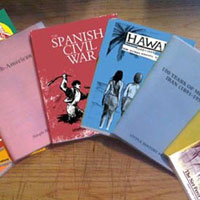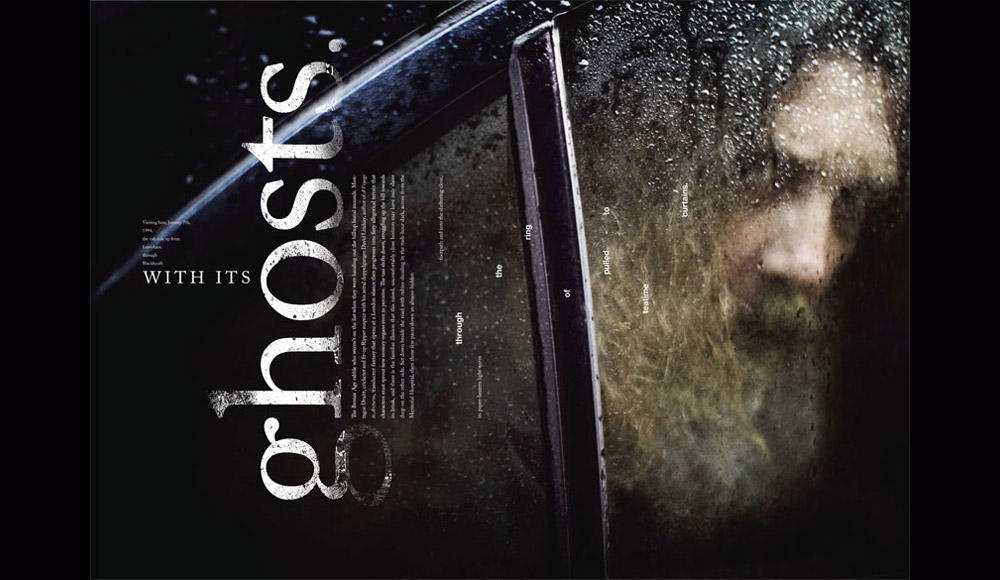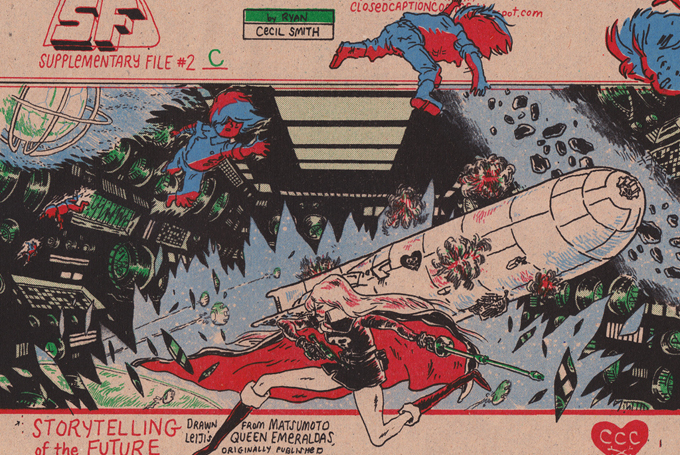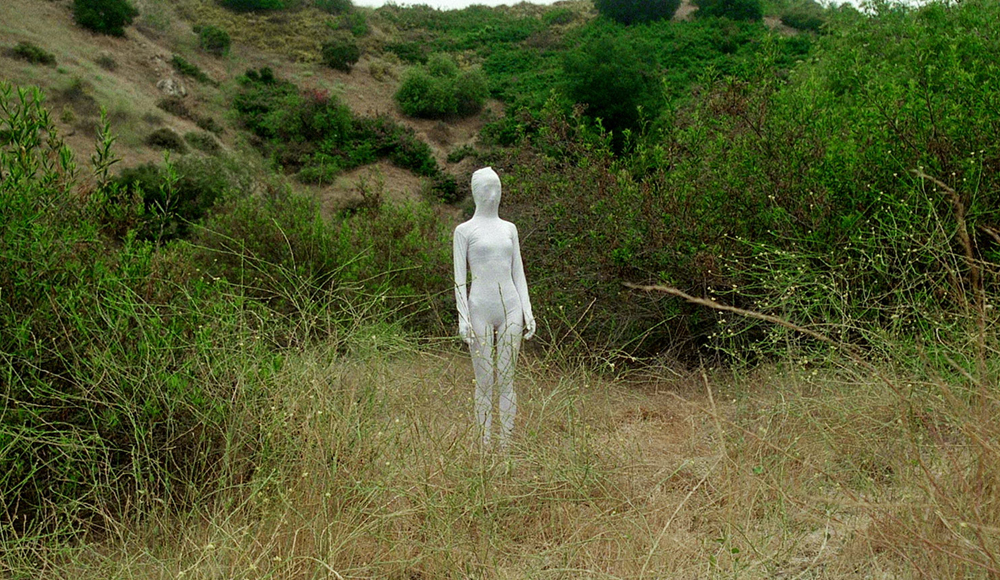Since 2010, Lost in Concert has been in the cataloging business. A group of writers and photographers who share a love for live music, the site has made it its mission to attend shows and bring the concert experience back to those who couldn’t be there. Its vivid photography and clear, enthusiastic words give readers the feeling that they were, sharing that special “had to see it” feeling that only a live show can give.
Arts
Cramp, Slash & Burn: Punk and glam through the lens of rock photographer John Scarpati
 John Scarpati: Cramp, Slash & Burn: When Punk and Glam Were Twins (6/22/12)
John Scarpati: Cramp, Slash & Burn: When Punk and Glam Were Twins (6/22/12)
As a photographer, John Scarpati is well known for his work on album covers, each a dynamic and living piece of art. During the 1980s in Los Angeles, he was the music photographer, an anthropologist of the Sunset Strip, his lens documenting the fashion, sounds, and faces in the era of outrageous musical fashion. Now Scarpati has collected those images in a book, Cramp, Slash & Burn: When Punk and Glam Were Twins.
Fund this: Stones Throw documentary gets Kickstarted
When Peanut Butter Wolf started Stones Throw Records in 1996, his friend and rap partner Charizma had just been killed. What started as a cathartic way to release the music they recorded together soon grew into something much larger, a record label releasing an eclectic range of music, with artists as diverse as Madlib, Mayer Hawthorne, and Omar Rodriguez Lopez on their rolls.
Need a weird X-mas gift? Pre-order limited editions of Alan Moore’s Unearthing
Regarded as one of the greatest graphic-novel writers ever, Alan Moore (V for Vendetta, Watchmen) has delved into the world of biography with Unearthing, an expansive narrative art-book. With photography by Mitch Jenkins, Unearthing “maps the lifetime of author, orientalist, and occultist Steve Moore, while simultaneously investigating the extraordinary history of South London with which that life has been intertwined.”
Book review: The Graphic Canon Vol. 1
 Russ Kick: The Graphic Canon Vol. 1 (Seven Stories, 5/22/12)
Russ Kick: The Graphic Canon Vol. 1 (Seven Stories, 5/22/12)
Graphic-novel adaptations of classic literature are a dime a dozen these days, but rarely have they been organized or anthologized so well as in The Graphic Canon. The first volume of The Graphic Canon (“From The Epic of Gilgamesh to Shakespeare to Dangerous Liaisons”) is chock full of comic-book goodness and covers a lot of ground, especially considering that this is just the first part of the so-called canon.
Featuring graphic-novel re-tellings of everything from Babylonian tablets to a Japanese Noh play, Canon (and its two later volumes, which focus on the 19th Century and modern literature respectively) certainly addresses a wide breadth of content, even if the graphic-novel form makes for some sacrifices in terms of depth. After all, it’s hard to get a true sense of Popol Vuh in so few pages, but these abridged classics often work as entertaining new tales in their own right.
Mechanized music marks Eli Keszler’s “L-Carrier” installation
The ambitious 28-year-old musician, composer, and visual artist Eli Keszler has an exciting month and road ahead of him. On June 5, he is releasing a two-CD compilation via Berlin-based PAN entitled Catching Net, and on June 7 he will perform alongside his newest installation piece, “L-Carrier,” at Eyebeam Art & Technology Center in New York City. The live event will be streaming at http://turbulence.org/works/l-carrier, and the installation will remain at Eyebeam through June 23.
Catching Net assembles selected old and new compositions that also can serve as stand-alone installations. It’s mostly centered around “Cold Pin,” which uses motorized arms to pluck, tap, and scrape against piano wires of varying lengths to produce percussive noise that is abrasive yet musically resonant.
Book review: Hark! A Vagrant
 Kate Beaton: Hark! A Vagrant (Drawn and Quarterly, 9/27/11)
Kate Beaton: Hark! A Vagrant (Drawn and Quarterly, 9/27/11)
Even if you’ve never heard of Kate Beaton, you’ve probably seen her work. Beaton, a Nova Scotian cartoonist and webmistress of harkavagrant.com, has quickly become a mainstay of Internet and blog culture, with her comics being re-posted around the Web and shared widely between bloggers, history buffs, and readers. Her sharp and somewhat absurd humor and casual riffing on history are instantly recognizable, and have earned Beaton a number of fans and accolades in the six years that harkavagrant.com has been online.
Zine Scene: Bill Brown’s Dreamwhip
 Bill Brown: Dreamwhip (Microcosm)
Bill Brown: Dreamwhip (Microcosm)
Most of us don’t feel like we have time to drive around or see the world. We have commitments, responsibilities — what we see as our lives, basically. We think of ourselves as stationary individuals, and traveling is something that we do for a week or two, maybe, when we’re not too busy or when we’ve been planning this for months in advance. Thinking of a life in non-stationary terms involves a huge shift in our frame of reference in order to even imagine the possibility. And yet there are others, for whom driving and drifting is life. Travel is almost a compulsion; being grounded takes on a new meaning in the context of highways, and living is defined as something else entirely.
Zine Scene: Ryan Cecil Smith’s SF Supplementary File
 Ryan Cecil Smith: SF Supplementary File (Closed Caption)
Ryan Cecil Smith: SF Supplementary File (Closed Caption)
Space-age mystery, kitschy thrills, and futuristic adventure — what more could the discerning zine reader want? SF Supplementary File is the brainchild of Ryan Cecil Smith, an American-born cartoonist living and working in Nishinomiya, Japan.
The first SF and SF Supplementary File were part of the same coming-of-age saga in space, a mini-comic throwback to the Golden Age of pulp science fiction. SF Supplementary File #2, however, goes even further; the zine is “a hand-drawn, hand-written reproduction from Matsumoto Leiji’s 1979 science-fiction manga series Queen Emeraldas in three parts.” This piece of the ’70s, lovingly updated, offers the nostalgic thrill of cross-cultural and cross-generational kitsch reconfigured into a jewel-toned, hand-assembled, risograph-printed zine.
Zine Scene: Abner Smith’s The CIA Makes Science Fiction Unexciting
 Abner Smith: The CIA Makes Science Fiction Unexciting #6 (Microcosm)
Abner Smith: The CIA Makes Science Fiction Unexciting #6 (Microcosm)
For more than a decade, zine writer Abner Smith has tackled what we usually consider USA-related “conspiracy theories” in The CIA Makes Science Fiction Unexciting. The series’ six issues delve into the shocking details of Martin Luther King Jr.’s assassination, HIV, Iran-Contra, and more. Smith’s writing reacts against both the personal-story vogue in the zine genre and the uncritical eye that most people give to historical accounts (you can read more about Smith in a wonderful interview with his publisher).
In each issue, Smith shows that all it takes is a little digging to uncover a more complex and troubling version of historical events than what the authorities or the media report. Reprints of all six of his zines are available through Microcosm, including his newest: an updated biography of Lee Harvey Oswald.
Zine Scene: J Gerlach’s Simple History Series
 J Gerlach: Simple History Series (Microcosm Publishing)
J Gerlach: Simple History Series (Microcosm Publishing)
The history textbook might seem like an odd choice to adapt to a zine format. On a shelf full of comics, perzines, and essays, you wouldn’t really expect to find a history of modern Iran or the Nez Perce Indians. J Gerlach’s Simple History series (Microcosm), however, aims to change that. Each edition chronicles a decisive moment or movement in world history, condensing a story to the 50-page chapbook format. These books provide an insightful and informative antidote to the bulky historical tome usually found at schools or libraries. Additionally, the presentation breaks significantly with the mainstream idea of “history;” a sort of micro-People’s History of the United States, Gerlach looks at these events with a leftist, anti-imperialist, and sharply critical approach that’s in contrast to many established historical interpretations.












